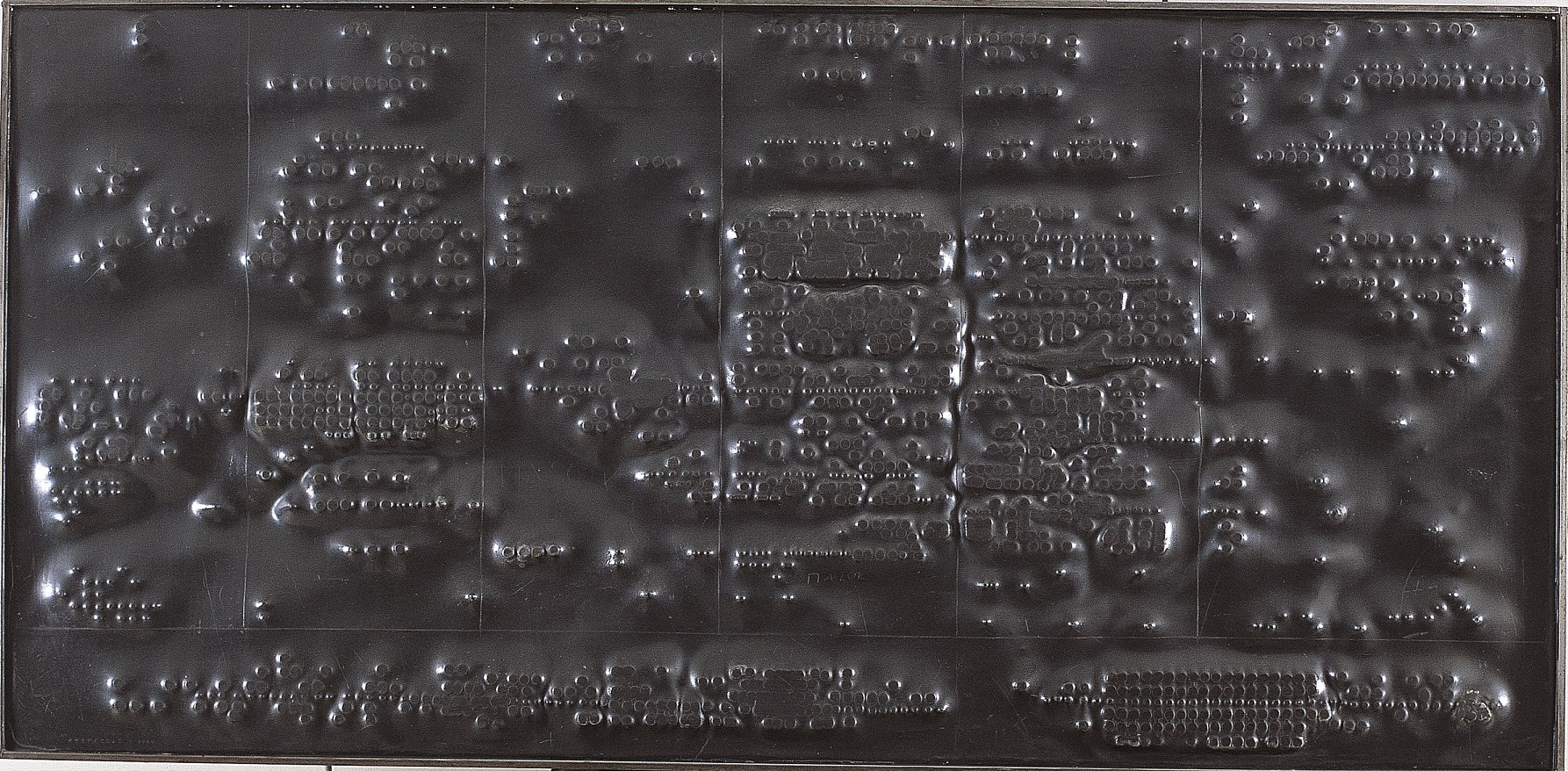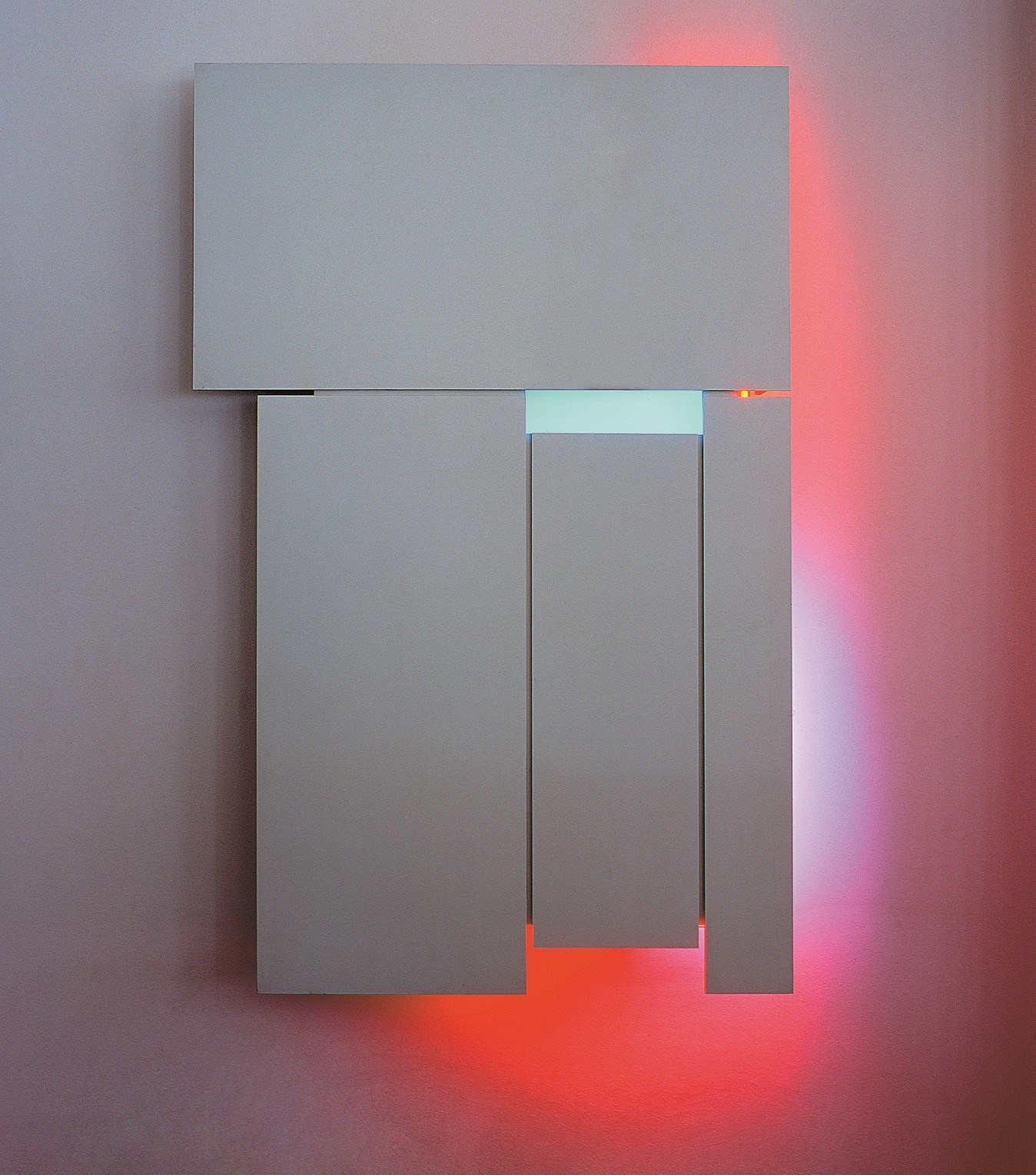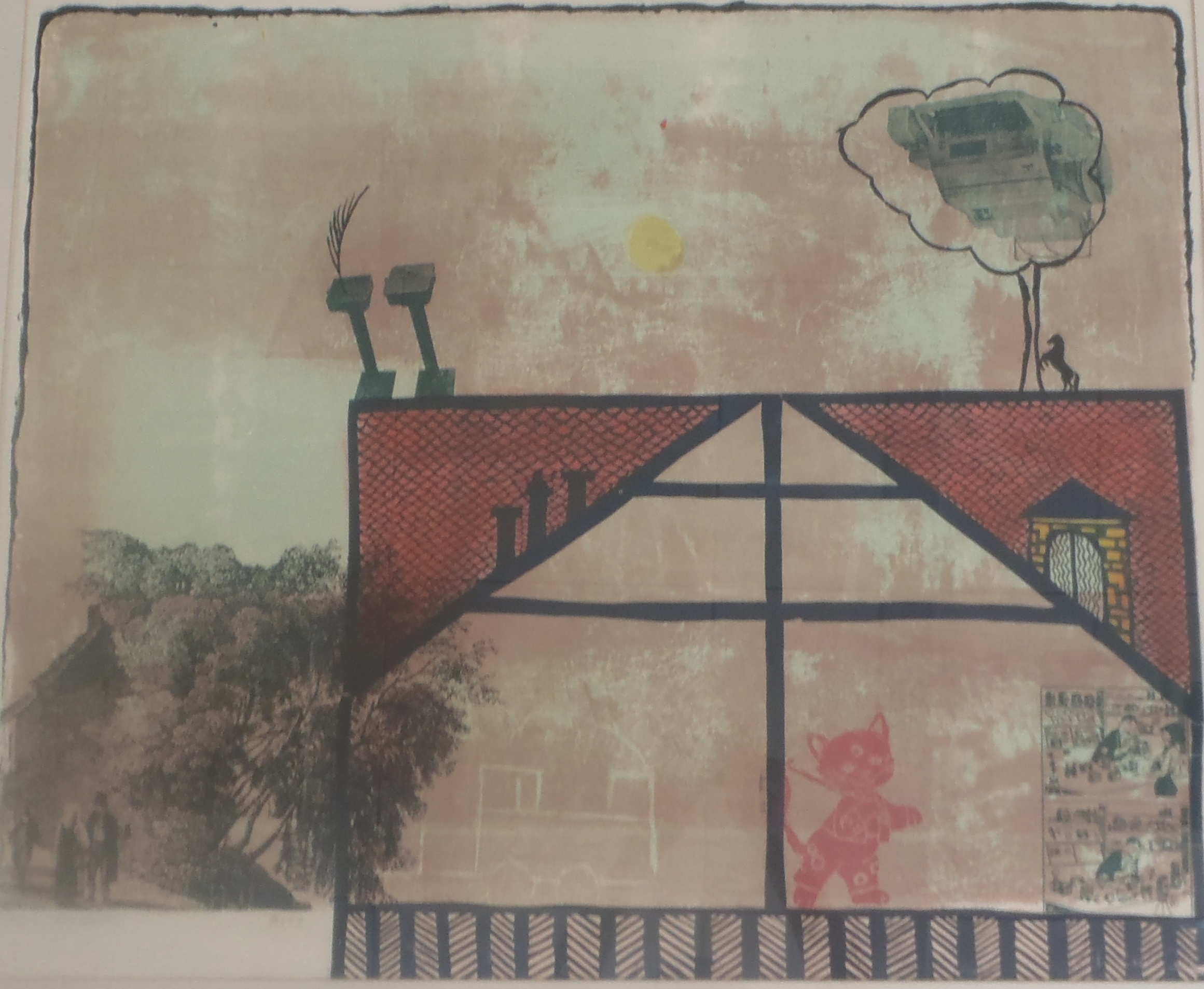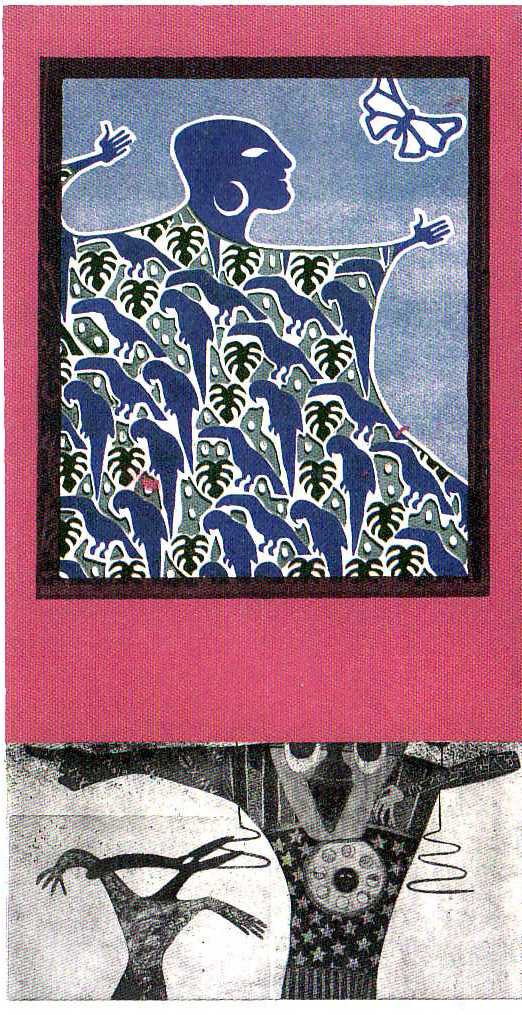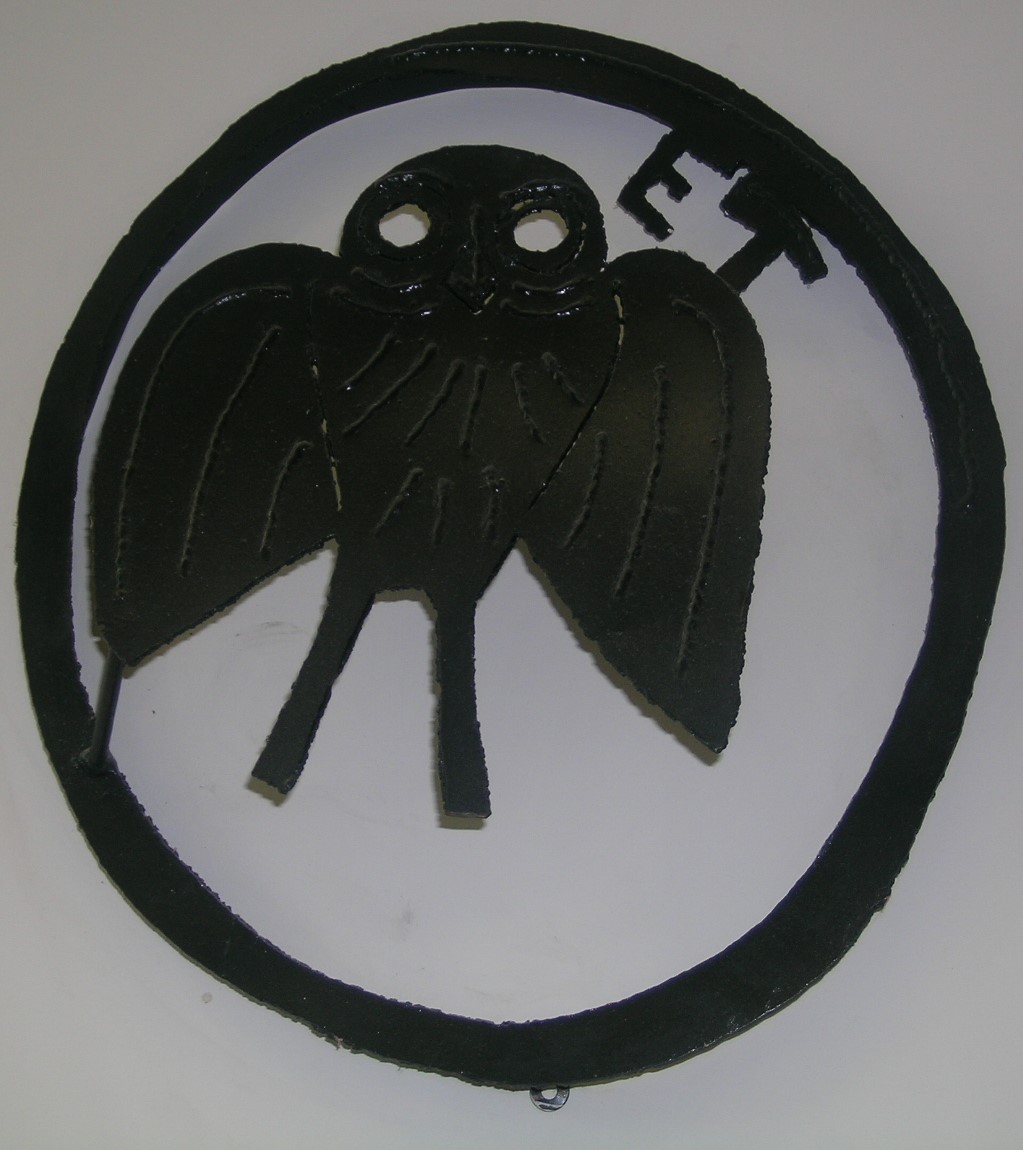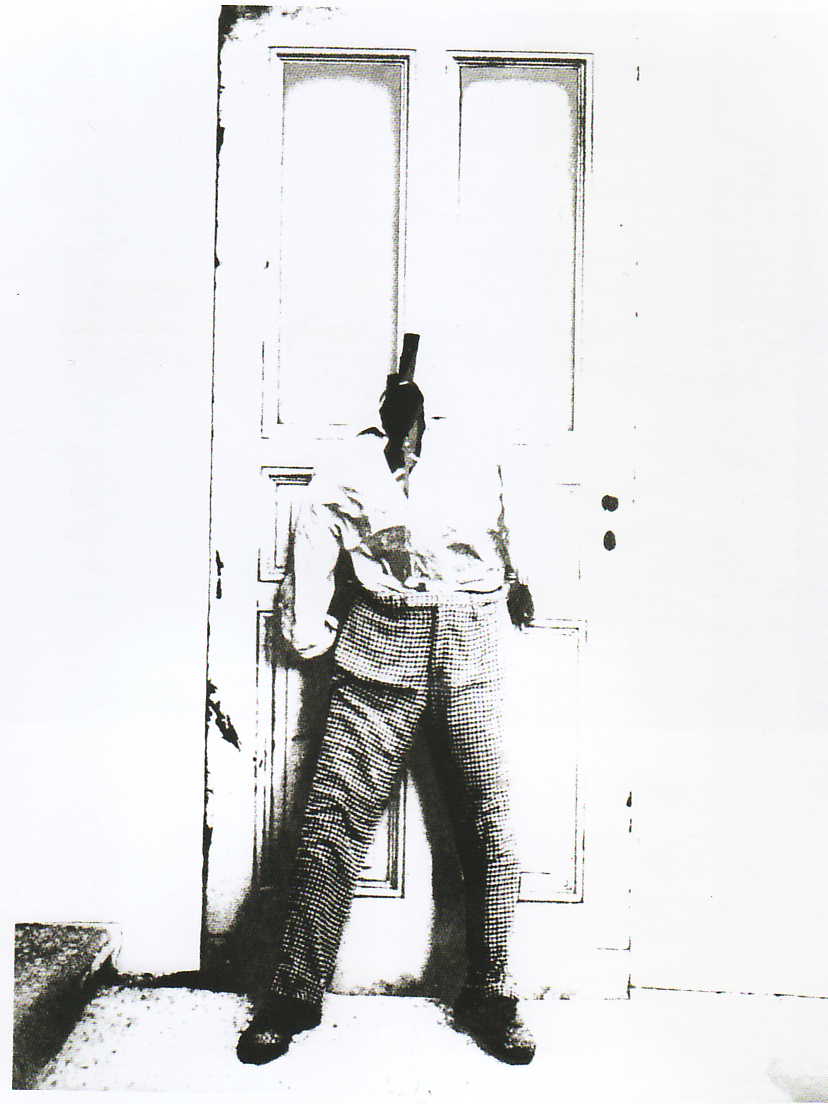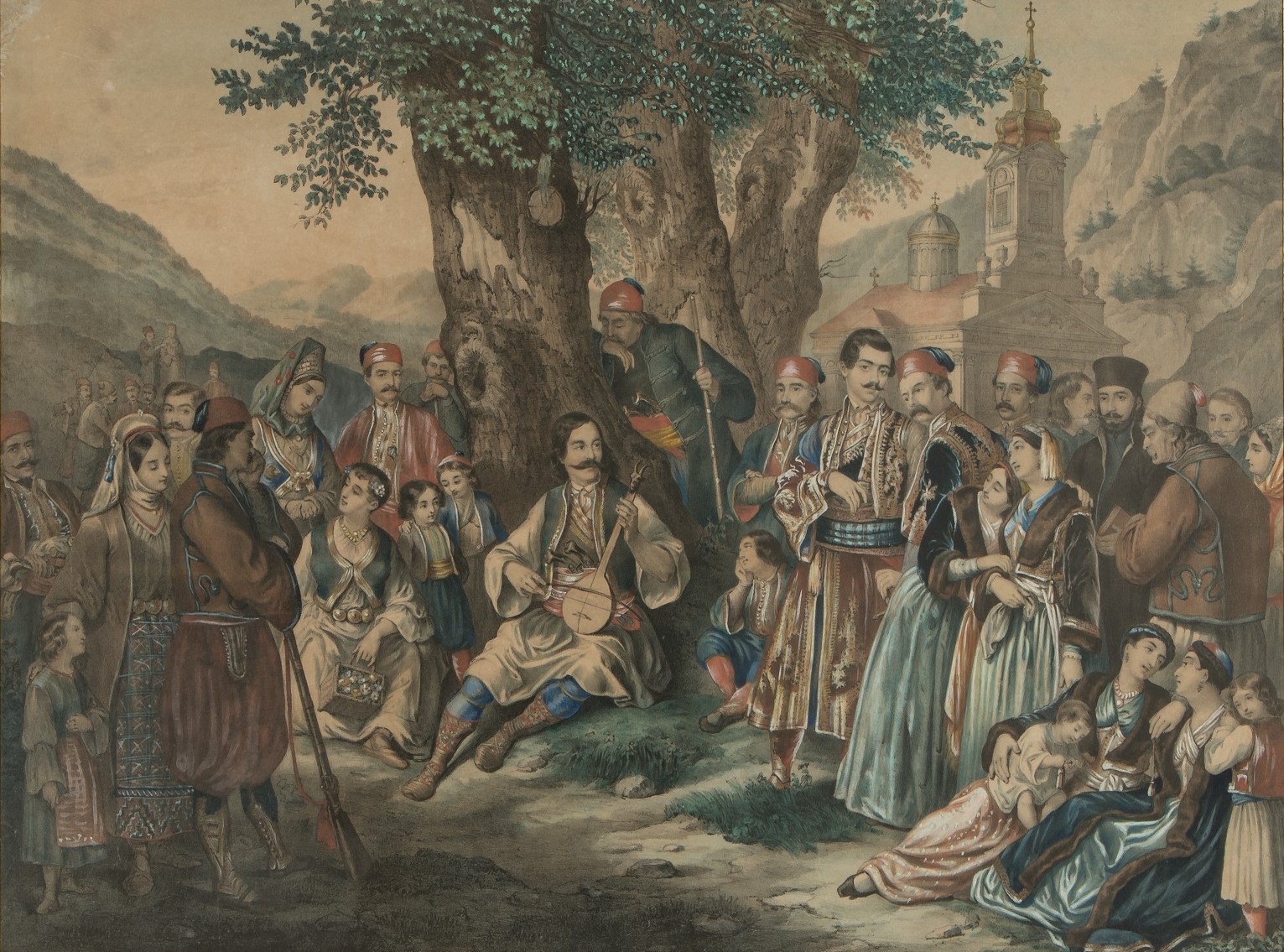Jason Molfessis, Hydrogen
With the piece Hydrogen, Jason Molfessis attempts to explore the relationship between the material world and humans. Through continuous experimentation with expressive means and materials, Molfessis developed an artistic idiom whereby elements from the realm of computer hardware meet materials such as lead or steel and acquire philosophical dimensions.
Introspection into the fundamental structures of matter
The piece Hydrogen is a typical sample of Jason Molfessis’ artistic explorations in the late 1960s and early 1970s. Made out of a lead sheet and polyester, it incorporates elements that reflect the artist’s deep connection with materiality and organic forms.
At the same time, the choice of these specific materials mirrors the experimental nature of Molfessis’ work. The lead alludes to density and resistance, while the polyester adds a sense of transparency and etherealness. On the surface of the piece, the embossed and organic forms are reminiscent of molecular structures or energy fields. This way, the artist attempts an introspection into the fundamental structures of matter.
A piece with philosophical overtones
Both nature and the sciences held a special place in the universe of Jason Molfessis. This is evident in Hydrogen, a piece through which the artist sought to approach the relationship between humans and the material world.
Through its title as well as its distinctive morphology, the piece initiates a dialogue about energy, life and the forces that govern physical reality. At the same time, it reveals the deeply spiritual and philosophical dimension of Molfessis’ art.
His life in a nutshell
Jason Molfessis (1925-2009) was born in Faliro, Athens. In 1941, during the Occupation, he was admitted to the Athens School of Fine Arts, where he studied painting in the workshop of Konstantinos Parthenis until 1946. In 1951, after a visit to Paris, he decided to continue his studies at the École Nationale Supérieure des Beaux-Arts. From then on, he continued living and working in the French capital.
During his artistic career, he held solo exhibitions and participated in numerous group and international exhibitions, such as the São Paolo Biennale in 1963, the Venice Biennale in 1972, Europalia in 1982, as well as in various Parisian Salons.
Between 1988 and 1990, he taught sculpture at the School of Fine Arts in Thessaloniki.
In 1994, he illustrated the publication The Revelation of John, translated by Yorgos Seferis.
Artistic influences
During his stay in Paris, Molfessis came in contact with the modernist movements and the concept of abstraction. This experience led him to reassess his stance toward modern Greek art.
Specifically, his artistic idiom was influenced by:
- Abstract expressionism
- Gestural painting
- Non-representational painting
A restless artist
Aiming to create a distinctive artistic idiom, Jason Molfessis devoted himself to continuous experimentation throughout his artistic journey.
Early on, he was drawn to the aesthetic of abstraction. From 1950 to 1965, he focused exclusively on painting. In works from that period, representational elements are still visible, but abstract forms, expressionist strokes, and a colour palette limited to white, black, and grey hues dominate.
Gradually, his expressive idiom became increasingly abstract. Toward the late 1960s, he began experimenting with the capabilities of computers and incorporating dotted surfaces resembling teleprinter tapes in his works.
From 1968 onward, he turned to sculpture and began creating similar dotted compositions using hammered lead and, later on, large sculptural installations. At the same time, he extended his experimentations to materials. In an original and inventive way, he used materials such as cement, polyester, steel, lead sheets, metal filings, industrial plastics, etc., in his works.
Participation in exhibitions
The piece Hydrogen has been featured in the Alpha Bank exhibitions:
- “The Alpha Bank Collection. Greek Art from 1920 until Today” held at the Macedonian Museum of Contemporary Art in Thessaloniki in 2006.
- “The Alpha Bank Collection. Greek Art from 1950 until Today” held in 3 cities in Cyprus (Nicosia, Limassol, Larnaca) in 2008.
- “The Alpha Bank Collection. Greek Art from 1950 until Today” held at the Rhodes Museum of Modern Greek Art – New Wing of the Nestoridion Melathron in 2016.
- “The Alpha Bank Collection. Greek Art from 1950 until Today” held at the Museum of Contemporary Art of Crete in Rethymno in 2016.
The piece was also featured in the solo exhibition “Jason Molfessis. Ploes V: In memory of the future” held at the Petros and Marika Kydonieos Foundation on Andros in 1999.
The work of art in our publications
The work Hydrogen by Jason Molfessis is referenced in the Alpha Bank publications:
- The Alpha Bank Collection. Greek Art from 1960 until Today, edited by Maria Tsantsanoglou, Irene Orati and Yiannis Bolis. The publication accompanied the same-titled exhibition that opened in Thessaloniki in 2018.
- The Alpha Bank Collection. Greek Art from 1950 until Today (Cyprus, 2008), edited by Irene Orati. The publication accompanied the same-titled exhibition.
In other literature
The piece is also referenced in the publication:
- Schina, Jason Molfessis. In memory of the future, exhibition catalogue, 1999.
The Alpha Bank Art Collection is not open to the public.
You can visit it by appointment. Contact us to book your visit.
